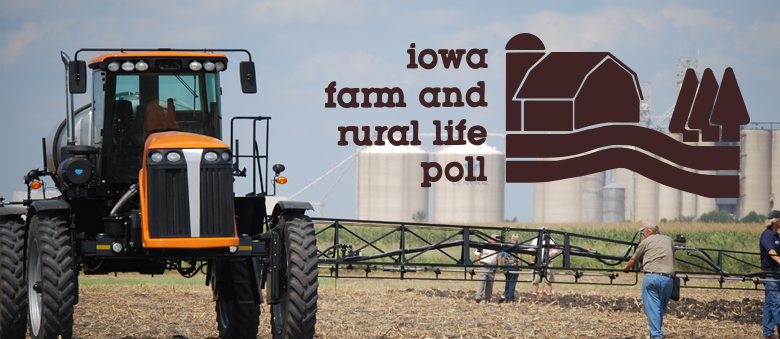Highlights from the 2024 Poll
The 2024 Iowa Farm and Rural Life Poll Summary Report focuses largely on the well-being of Iowa farmers over time. Specifically, it tracks quality of life, stress, farm financial health, and satisfaction with life and work over the annual survey’s four decades of data collection. The survey also examines farmers’ use of professional advisers to help with farm decision making, their awareness of and interest in conservation agronomist programs and the prairie strips conservation practice, and their use of various communication technologies to access information for agricultural decision making.
- All of the summary reports since 1982 can be found here
- All the topical reports since 1982 can be found here
What is the Iowa Farm and Rural Life Poll?
The Iowa Farm and Rural Life Poll was established in 1982 to provide timely and relevant information on agriculture and rural life. Generally known simply as “The Farm Poll,” it is an annual survey of Iowa farmers. It is a cooperative project between the Iowa State University Agriculture and Home Economics Experiment Station, ISU Extension Service and the Iowa Department of Agriculture and Land Stewardship. The annual survey is managed by ISU Extension Sociology. The overall objective of the Farm Poll is to understand how the ongoing changes in Iowa’s agriculture and rural areas affect farmers and rural society as a whole.
How does it Work?
A statewide sample of approximately 2,000 farm operators participate in the annual survey. The questionnaires are sent to the same group of farmers every spring, which permits analysis of change over time.
What kinds of issues does the Farm Poll examine?
A wide variety of issues are examined through the Farm Poll: opinions about current agricultural policies, land stewardship ethics, assessments of the future of farming, research and extension education needs and priorities, the incidence of off-farm employment, plans for the future, the next generation of farmers, etc.
Benefits of the Farm Poll
Information from the poll is made available to local, state, and elected officials, community leaders, farm organization leaders, policy makers, and many other groups and individuals who have a stake in the vitality of agriculture and rural society. Information from the Farm Poll is used to guide policy decisions and actions and as the basis for public policy seminars, Extension reports, radio and television broadcasts, and newspaper and journal articles.

